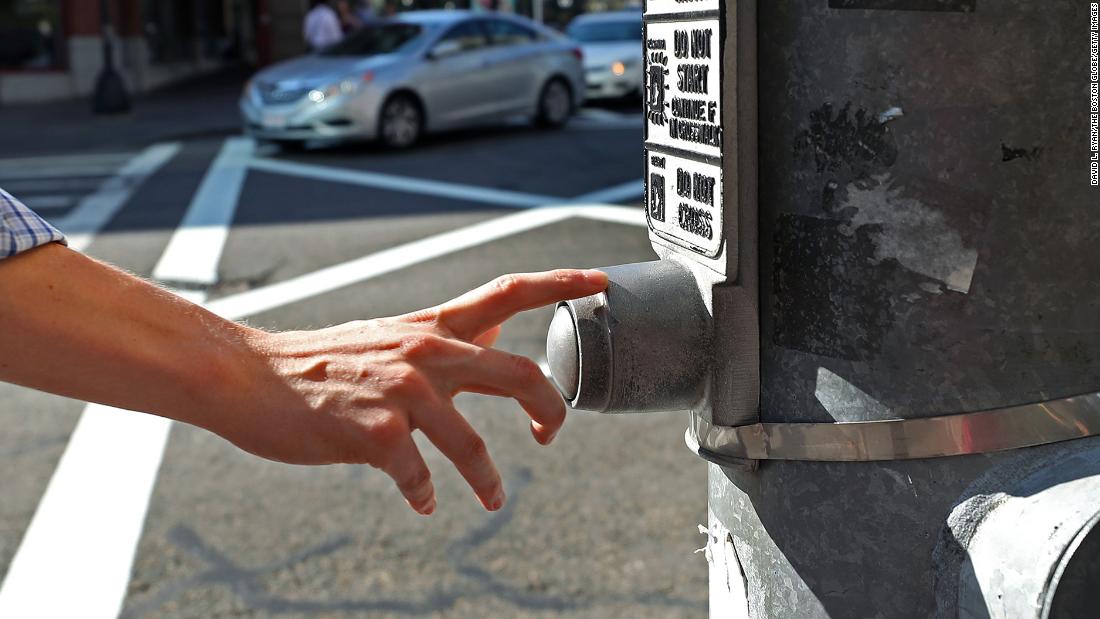[ad_1]
Have you ever pressed the pedestrian button at a crosswalk and wondered if it really worked? Or bashed the “close door” button in an elevator, while suspecting that it may, in fact, have no effect whatsoever?
You’re not alone, and you may be right. The world is full of buttons that don’t actually do anything.
They’re sometimes called “placebo buttons” — buttons that are mechanically sound and can be pushed, but provide no functionality. Like placebo pills, however, these buttons may still serve a purpose, according to Ellen Langer, a Harvard psychologist who pioneered a concept known as the “illusion of control.”
“They do have a psychological effect,” she said in a phone interview. “Taking some action leads people to feel a sense of control over a situation, and that feels good, rather than just being a passive bystander.
“Doing something typically feels better than doing nothing.”
Don’t walk
Worsening traffic may be behind the shift. Crosswalk signals were generally installed before congestion had reached today’s levels, and, over time, they started to interfere with the complex coordination of traffic lights.
But while their function was taken over by more advanced systems — such as automated lights or traffic sensors — the physical buttons were often kept, rather than being replaced at further expense.

A pedestrian crossing in London. Credit: Newscast/UIG/Getty Images
“We do have some crossings where the green light comes on automatically, but we still ask people to press the button because that enables accessible features,” said Glynn Barton, director of network management at Transport for London, in a phone interview.
Others, meanwhile, only respond to the button at certain times of day.
“But, in the majority of cases, pressing the button will call the pedestrian stage,” said Barton.
Close the door?
So what about the most jabbed button of them all: the “close door” in elevators? If you live in the US, it almost certainly doesn’t work.
“To put it simply, the riding public will not be able to make the doors close any faster using that button,” said Kevin Brinkman of the National Elevator Industry in an email.

Buttons found on elevators. Credit: praphab louilarpprasert/Shutterstock
So, unless the allotted boarding time has been reached, pressing the button will do nothing. It’s only there for firefighters, emergency personnel and maintenance workers, who can override the delay with a key or a code.
Outside the US, there’s a higher chance — though not a certainty — that the button will work.
“The functionality of the button — whether or not it actually closes the door sooner — is determined by the building code or customer,” said Robin Fiala of Otis, the world’s largest manufacturer of elevators, in an email.
Too hot to handle
“In absence of controlling the other metrics, air temperature often makes a poor proxy for thermal comfort,” he said. In other words: Full control doesn’t necessarily equate to more comfort.

Office thermostats may not always be operational. Credit: Martin Keene/PA Images/Getty Images
“Thermal comfort research demonstrates that when people have perceived temperature control over their spaces, some may tolerate higher levels of discomfort,” said Bean.
“If a non-functioning (placebo) thermostat or limited function thermostat is installed, just having the option to manipulate it can affect one’s perception.”
“(They) were placed there to quiet a constant complainer by giving them control,” he said in an email. “As an engineering trainee I was sent to calibrate one. When I asked why they had me calibrate a thermostat that was not hooked up, they panicked and asked if I told the occupant it wasn’t hooked up.
“After assuring them I hadn’t spilled the beans, they admitted that, by not telling me it was disconnected, they thought I would put on a more realistic calibration show.”
Good buttons
According to Langer, placebo buttons have a net positive effect on our lives, because they give us the illusion of control — and something to do in situations where the alternative would be doing nothing (which explains why people press the elevator call button when it’s already lit).

Buttons can give people an “illusion of control.” Credit: Fox Photos/Hulton Archive/Getty Images
In the case of pedestrian crossings, they may even make us safer by forcing us to pay attention to our surroundings. And ultimately, pressing a button doesn’t require much effort.
“When you think about it, it’s such a small response that, even if it doesn’t have any effect, it hardly has a cost,” Langer said. “I think it’s a shame if people call it a ‘placebo button’ and, by that name, think that people are behaving foolishly. Hidden in that (term), is the belief that people are foolish for pressing them — or mean for putting buttons there that serve no purpose in the first place.
“They serve a psychological purpose at the very least,” she added, “and sometimes they do have an effect.”
[ad_2]
Source link








